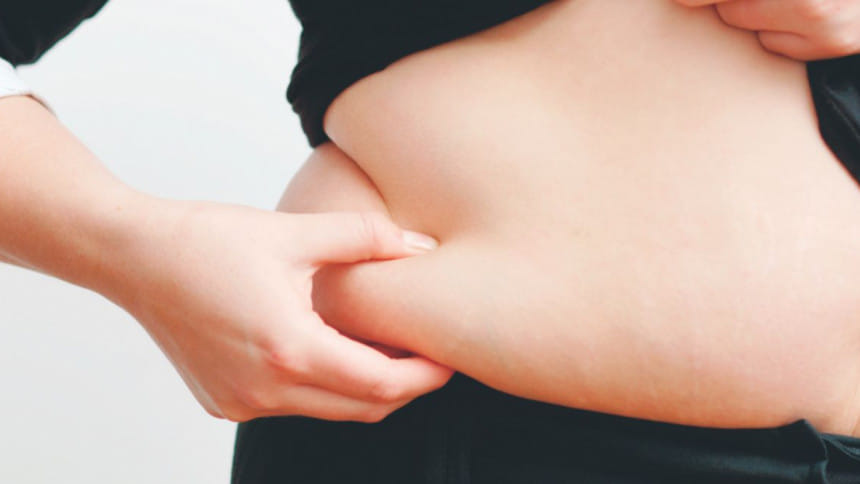Belly fat in women: Increasing the risk of heart disease

An expanding waistline is sometimes considered the price of getting older. For women, this can be especially true after menopause, when body fat tends to shift to the abdomen. Yet an increase in belly fat does make it hard to zip up your jeans. Research shows that belly fat also carries serious health risks for heart disease. The good news is that the threats posed by belly fat can be reduced.
What is behind belly fat?
Your weight is largely determined by how you balance the calories you eat with the energy you burn. If you eat too much and exercise too little, you are likely to carry excess weight — including belly fat.
However, aging also plays a role. Muscle mass might diminish slightly with age, while fat increases. Loss of muscle mass also decreases the rate at which your body uses calories, which can make it more challenging to maintain a healthy weight. Many women also notice an increase in belly fat as they get older — even if they are not gaining weight. This is likely due to a decreasing level of oestrogen, which appears to influence where fat is distributed in the body.
Why belly fat is more than skin deep?
The trouble with belly fat is that it is not limited to the extra layer of padding located just below the skin (subcutaneous fat). It also includes visceral fat — which lies deep inside your abdomen, surrounding your internal organs. Although subcutaneous fat poses cosmetic concerns, visceral fat is linked with far more dangerous health problems, including heart diseases, type 2 diabetes, high blood pressure, abnormal cholesterol level and breathing problems. It is evidenced that excess belly fat has an increased risk of premature death — regardless of overall weight.
Measuring your middle
So how do you know if you have too much belly fat? Measure your waist by standing and placing a measuring tape around your bare tummy, just above your hipbone. Pull the tape until it fits around you, but does not push into your skin. Make sure the tape is levelled all the way around. Relax, exhale and measure your waist, resisting the urge to suck in your stomach. For women, a waist measurement of more than 35 inches/89 centimetres indicate an unhealthy concentration of belly fat and a greater risk of health problems.
Trimming the fat
You can tone abdominal muscles with crunches or other targeted abdominal exercises, but just doing these exercises will not get rid of belly fat. However, visceral fat responds to the same diet and exercise strategies that help you shed excess pounds and lower your total body fat. To battle belly fat:
• Eat a healthy diet: Emphasise on plant-based foods, such as fruits, vegetables, whole grains, lean sources of protein and low-fat dairy products. Limit added sugar and saturated fat, which is found in meat and high-fat dairy products, such as cheese and butter. Choose moderate amounts of monounsaturated and polyunsaturated fats — found in fish, nuts and certain vegetable oils — instead.
• Replace sugary beverages: Drink water or beverages with artificial sweetener instead.
• Include physical activity in your daily routine: For most healthy adults, moderate aerobic activity is recommended, such as brisk walking for at least 150 minutes a week or vigorous aerobic activity, such as jogging, for at least 75 minutes a week. In addition, strength training exercises are recommended at least twice a week. If you want to lose weight or meet specific fitness goals, you might need to exercise more.
To lose excess fat and keep it from coming back, aim for slow and steady weight loss — up to 2 pounds/1 Kilogram a week. Consult your doctor for help getting started and staying on track. Have a slim body which will make you look good as well as reduce the risk of heart disease.
The writer is an Assistant Professor of Medicine at Z H Sikder Women's Medical College and Hospital, Dhaka.

 For all latest news, follow The Daily Star's Google News channel.
For all latest news, follow The Daily Star's Google News channel. 



Comments